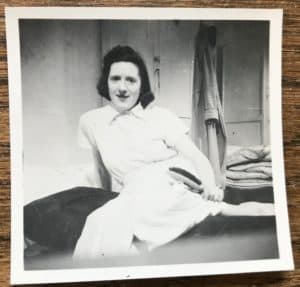In March 2020, Tess Walker contacted the Museum – she had some photographs of workers at Milton Court during World War Two, she had found these in a set of letters from one of the workers, Joan Reynolds to her then boyfriend, later husband, Tom Abbott.
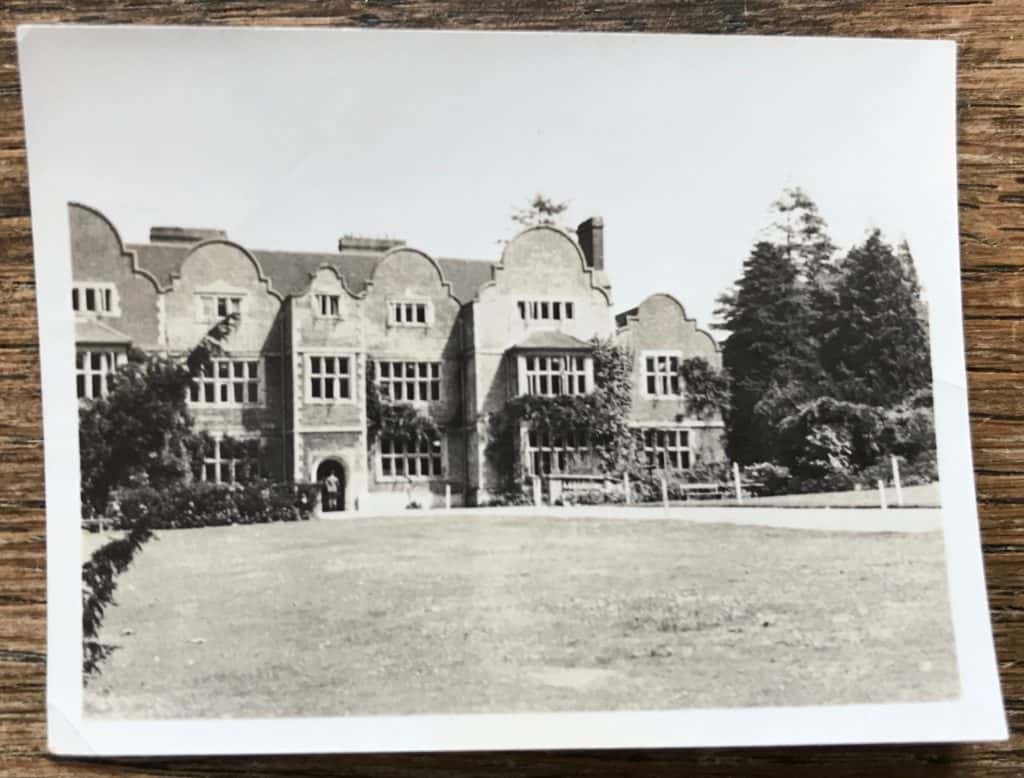
© Dorking Museum
Tess writes “Joan was the wife of Tom, and mother of Rick, who was my husband’s cousin. I never met Joan or Tom. When Tom died, Rick just put all of Tom’s papers into the garage. When Rick died in February 2020, there were no known relatives left and so Rick’s buddies cleared the house. We were called in to take various family bits and pieces away.
Although not my relations, I felt bound to do something with the photos from both Sue and Rick.
It seems Joan Abbott had a simple life – ‘just a wife’, and Tom had done most of his interesting things before Rick was born, and appears to have retired in 1960.
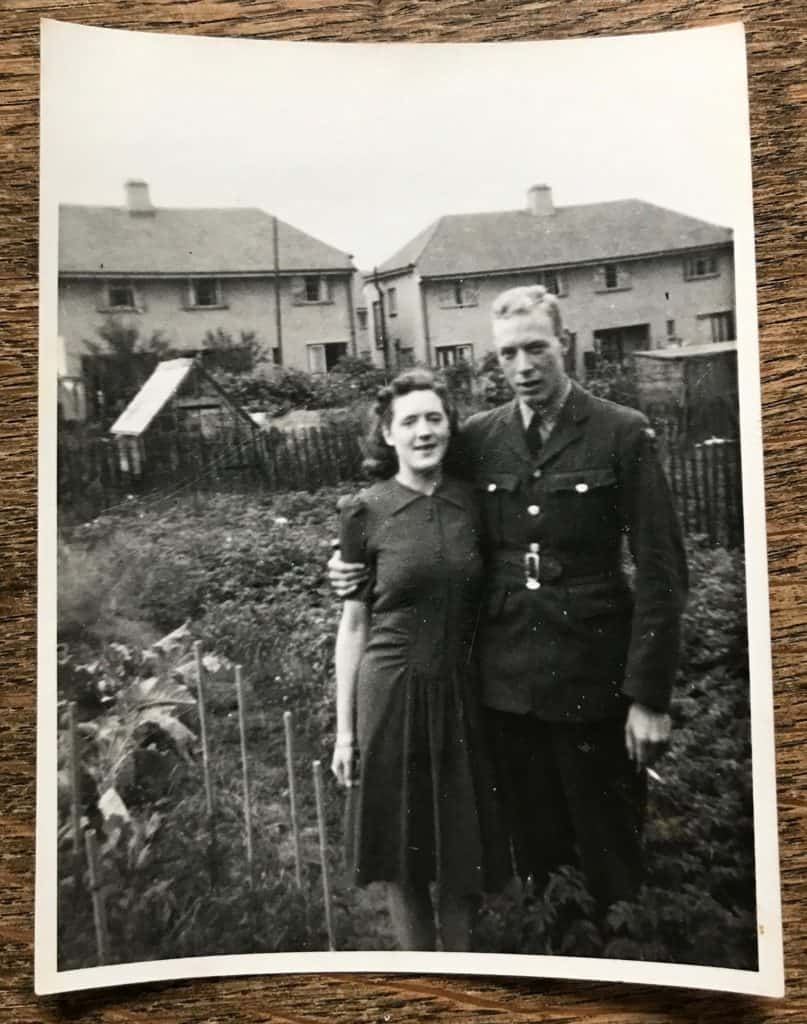
Borehamwood 1941.
© Dorking Museum
Joan Margaret Reynolds was born on 1st March 1919. She had an ardent suitor in Edgar Thomas Abbott (Tom) who was a policeman in London. She kept ten of his letters for the rest of her life. She married him in 1943 when he was in the RAF and had returned to England after training pilots in Texas. Their only child Richard, was born in 1948. Tom and Joan returned to London as Tom re-trained to be a teacher after the war, and taught in Hackney Downs Grammar School. He retired in 1960 and they lived in Wincanton until her death on New Year’s Day 1992, and his in December 2002.”
Milton Court was used by W. T. Henley Cable Manufacturing during WW2. W. T Henley manufactured telegraph cables and was involved with Operation Pluto.
Amongst the photographs were exterior shots of the house and the garden in 1941-2, and photographs of Joan Reynolds and other girls employed in Room L, Accounts 8.
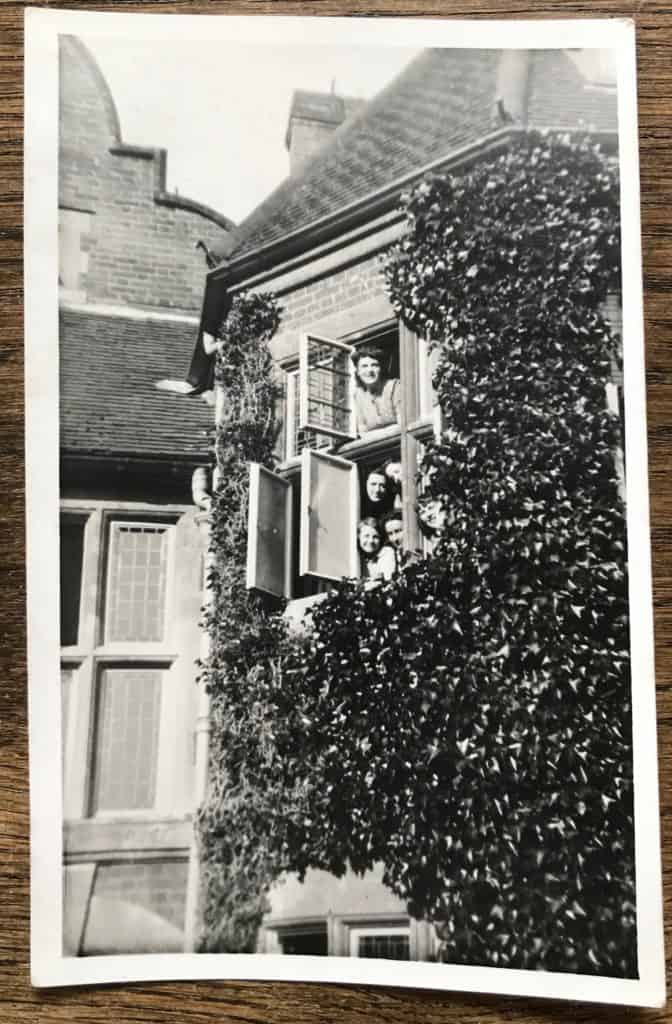
Clockwise from bottom left : Wendy Talbot, Joan Reynolds, Jackie McCaughey,
Doris Greenhough, Pat Boeree
Milton Court, Dorking August 1941
© Dorking Museum
Milton Court (now Unum) was a 17th-century country house, extended and substantially rebuilt in the 19th century. It was bought in 1939 by W. T. Henley’s Telegraph Works Company who moved down from their head office in Holborn in London just as war was about to break out. About 300 members of staff lived in the Milton Court mansion and in the lodges. Offices were built in the grounds. Henley’s was actively involved in operation PLUTO (Pipeline Under the Ocean), in developing magnetic mine detection equipment and in the control of power supplies to parts of London during the war. There was an active Sports and Social Club with concerts, plays, dances, lectures, sports and other activities. Ralph Vaughan Williams conducted the Henley Choir for a while during the war and wrote his choral version of ‘Greensleeves’ for it.
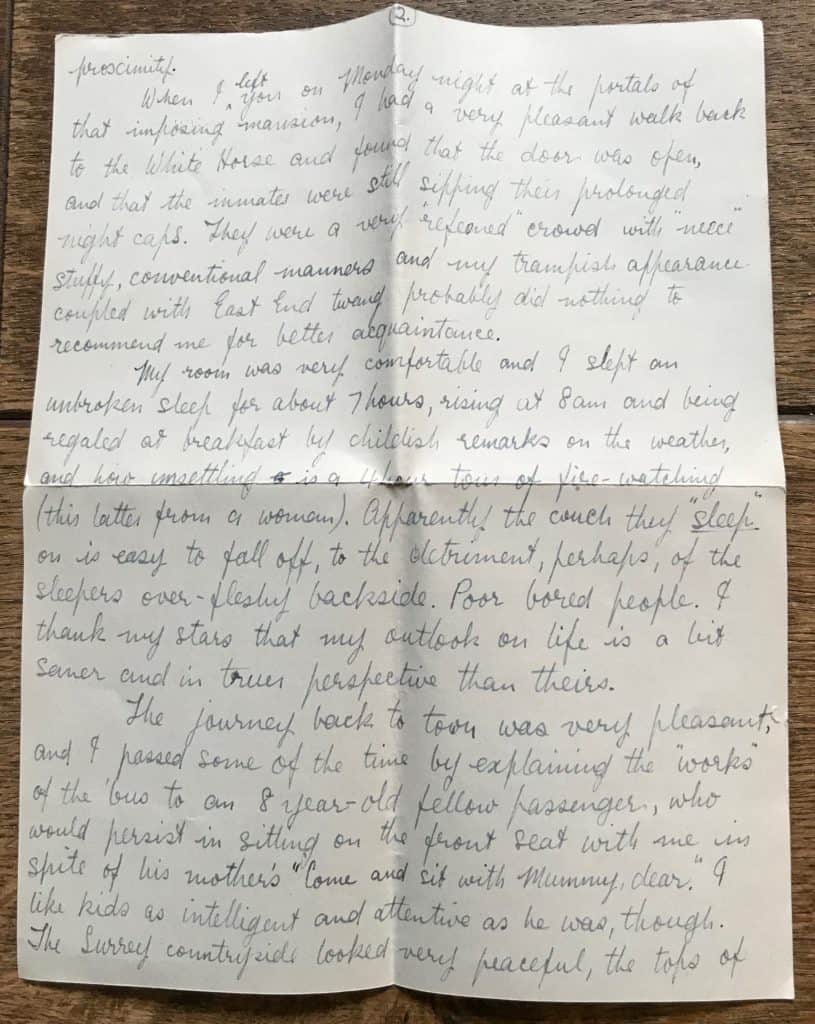
When I left you on Monday night at the portals of that imposing mansion, I had a very pleasant walk back to the White Horse and found that the door was open, and that inmates were still sipping their prolonged night caps. They were a very “refeined” crowd with “neece” stuffy, conventional manners and my trampish appearance coupled with that East End twang probably did nothing to recommend me for better acquaintance.
My room was very comfortable and I slept an unbroken sleep for about 7 hours, rising at 8am and being regaled at breakfast by childish remarks on the weather, and how unsettling is a 4 hour tour of fire-watching (this latter was from a woman). Apparently the couch they ”sleep” on is easy to fall off, to the detriment, perhaps, of the sleepers over-fleshy backside. Poor bored people. I thank my stars that my outlook on life is a bit saner and in true perspective than theirs.
The journey back to town was very pleasant, and I passed some of the time by explaining the “works” of the ‘bus to an 8 year-old fellow passenger, who would persist in sitting in the front seat with me in spite of his mother’s “Come and sit with Mummy, dear”. I like kids as intelligent and attentive as he was, though. The Surrey countryside looked very peaceful.
The letters are addressed to ‘Accounts 8’. Accounts 8 was Joan Margaret Reynolds and her friends, Doris Greenhough, Pat Wills, Pat Boeree, Jacky McCaughey, Wendy Talbot, Hilda, and Olive.
Read the complete set Tom’s letters to Joan here.
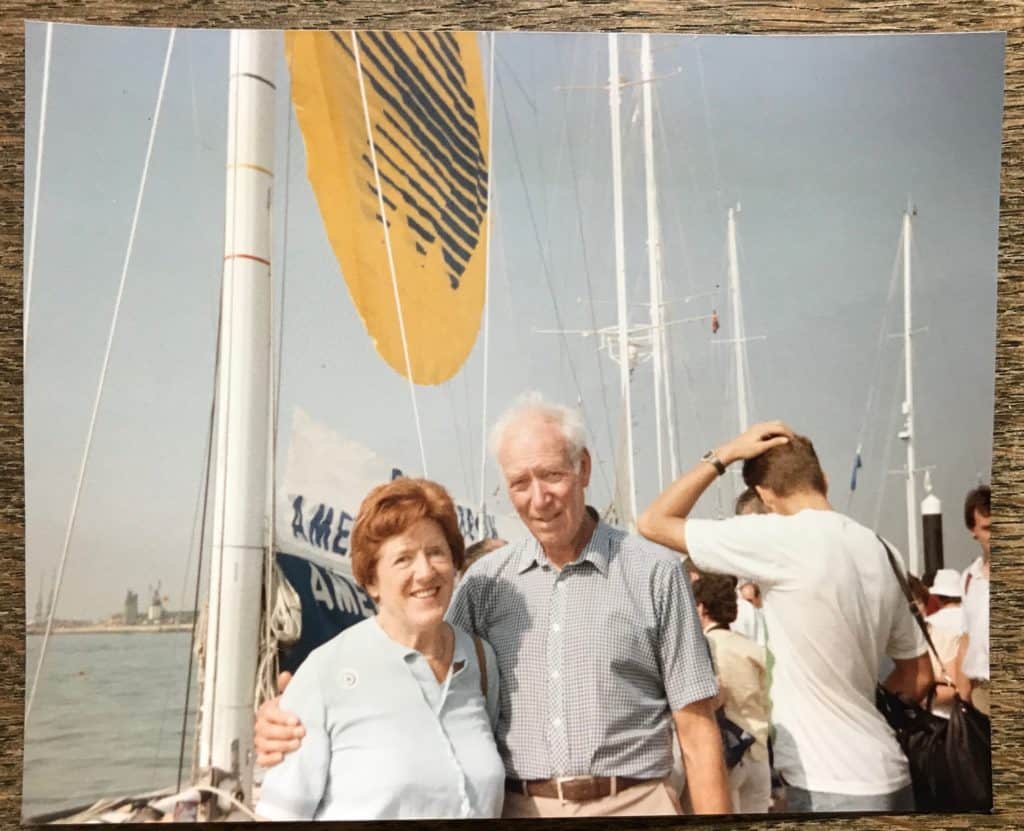
© Dorking Museum

